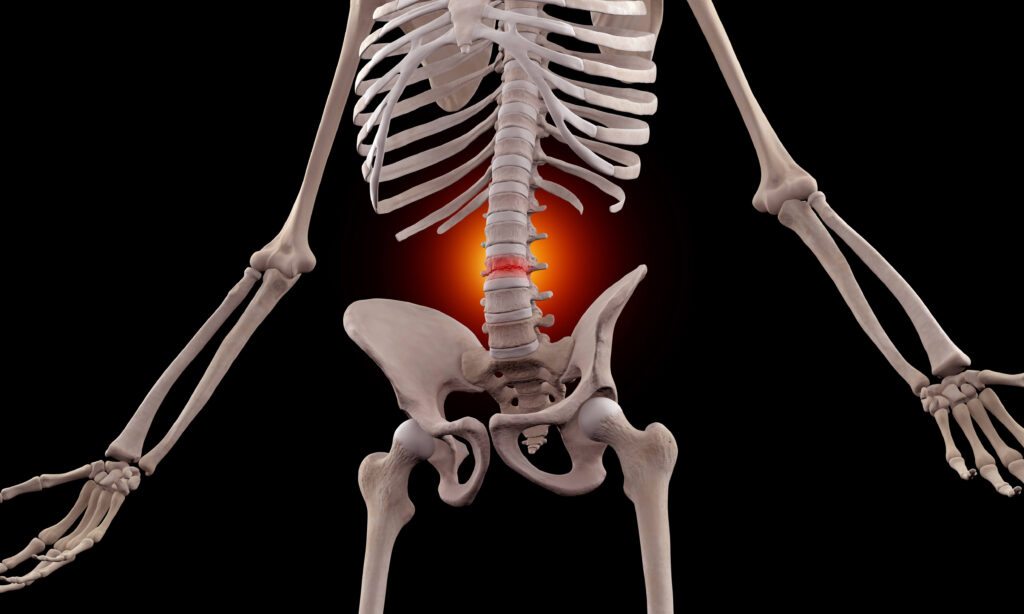
What is a Lumbar Fusion?
Lumbar fusion, a surgical procedure that aims to alleviate pain caused by various spine disorders, is a topic that often surfaces in discussions about back pain and spinal health. This procedure, while complex, can be a life-changing option for those who have not found relief through non-surgical treatments. In this comprehensive post, we’ll delve into what lumbar fusion is, who might need it, how it’s performed, the recovery process, and the outcomes patients can expect.
Understanding Lumbar Fusion
Lumbar fusion is a type of surgery that permanently joins together one or more vertebrae in the spine, eliminating movement between them. The lumbar region of the spine, which comprises the lower five vertebrae, is a common site for surgical intervention because it bears a significant amount of the body’s weight and is a frequent source of pain.
The primary goal of lumbar fusion is to stabilize the spine, which can reduce pain, correct deformities, and improve stability. The need for fusion arises from conditions that cause instability or pain due to abnormal movement of the vertebrae. Such conditions include degenerative disk disease, spondylolisthesis, scoliosis, fractures, tumors, and infections.
Indications for Lumbar Fusion
Patients considered for lumbar fusion typically have chronic lower back pain that has not responded to conservative treatment methods such as physical therapy, medications, or injections. Here are some of the common conditions that might lead to a recommendation for lumbar fusion:
- Degenerative Disc Disease (DDD): This occurs when the intervertebral discs, which act as cushions between the vertebrae, begin to deteriorate with age.
- Spondylolisthesis: A condition where one vertebra slips forward over the one below it.
- Spinal Stenosis: Narrowing of the spinal canal that causes nerve pain.
- Fractures: Severe spinal column injuries that may result from accidents or falls.
- Scoliosis: A curvature of the spine that develops mostly during adolescence.
The Surgical Procedure
Lumbar fusion surgery can be performed using various techniques, depending on the location and severity of the spine issue, as well as the patient’s overall health. Common techniques include:
- Posterolateral Fusion: The bone graft is placed between the transverse processes in the back of the spine. Metal screws and rods are typically used to hold the vertebrae together while the bone graft heals.
- Interbody Fusion: The bone graft is placed between the vertebrae where the disc originally was. This can be done using different approaches like anterior lumbar interbody fusion (ALIF), posterior lumbar interbody fusion (PLIF), or transforaminal lumbar interbody fusion (TLIF).
Surgeons often use bone grafts from the patient’s own pelvis (autograft), donor bone (allograft), or synthetic materials to promote bone growth and facilitate fusion. The choice of graft material depends on various factors, including the specific needs of the patient and the surgeon’s preference.
Recovery & Rehabilitation
Recovery from lumbar fusion surgery varies greatly among individuals but typically involves a stay in the hospital for several days. Pain management is a crucial aspect of the immediate postoperative period and is addressed with medications and, sometimes, pain management techniques like nerve blocks.
Physical therapy plays a vital role in the recovery process. It typically starts with gentle activities and gradually progresses to more strenuous exercises as the patient’s condition improves. The goal is to strengthen the muscles around the spine, improve flexibility, and increase endurance.
The total recovery period can range from several months to a year, during which patients may be advised to avoid specific movements to allow the fusion to solidify properly. Activities like bending, lifting heavy objects, or twisting should be avoided or minimized.
Outcomes & Considerations
The success of lumbar fusion surgery is influenced by several factors, including the patient’s overall health, the specific spinal condition being treated, and the surgical technique used. Generally, patients can expect a significant reduction in pain and an improvement in their ability to perform daily activities.
However, lumbar fusion is not without risks. Complications can include infection, nerve damage, blood clots, and persistent pain at the bone graft site. Additionally, there is a phenomenon known as adjacent segment disease (ASD), where the vertebrae immediately above and below the fused section can experience increased stress, potentially leading to degeneration.
Patients considering lumbar fusion should discuss all these aspects with their healthcare provider to make an informed decision about the surgery. It’s essential to consider not only the potential benefits but also the risks and the commitment required during the recovery phase.
Contact Us at Neurosurgery & Spine Consultants Today
Lumbar fusion surgery is a significant procedure that can offer relief and improved quality of life for patients with severe and chronic lower back pain. While it involves a considerable recovery period and not without risks, the outcomes can be profoundly beneficial for the right candidates. As with any medical treatment, a thorough evaluation and consultation with a qualified spine specialist are crucial to determine if lumbar fusion is the best option for managing your specific spinal condition. Contact us today using the form below to schedule your appointment to be seen by one of our amazing medical team members.
DISCLAIMER: No content on this site, regardless of date, should ever be used as a substitute for direct medical advice from your doctor or other qualified clinician.